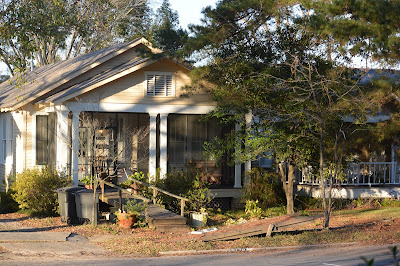George Eastman House, Rochester NY. Geisha, studio composition, by Baron Reteniz von Stillfried, albumen print, c. 1875, and New Year Drill of Japanese Fire Brigage, by Kusakabe Kimbei, albumen print, c. 1890 (but by this date probably gelatin silver rather than collodion emulsion negative).
What both Gilbert and Schertzinger knew
Between these two (and many other) photos from Japan, both studio compositions, like the first, and live photos (very likely, in 1890, already gelatin silver emulsion rather than collodion, like the geisha picture), both by Europeans and by Japanese photographers, Gilbert and Sullivan’s
Mikado was produced in London in 1885.
Very probably, in designing the 1939 technicolor film, a collaboration of D’Oyly Carte and Hollywood, its director Victor Schertzinger (already well informed in all such matters) had hundreds of such 19th-century photographs, as well as the D’Oyly Carte archives, at his disposal, and certainly the designers of the original production and all its successors had used, not least when they wanted to spoof the Japan of popular Victorian imagination, all the commercially available Japan photos that people put in their albums.
Of all the commentators on the 1939 film (not to mention a couple of ludicrous comments among those provided by Amazon), only Mike Leigh understands where G&S were coming from or what was at work in making the film. On the other hand, I am sure that the Criterion Collection appreciated all the factors when they chose to include it in their invaluable list.
When c. 1952 or 1953 I first saw it at the Elmwood theater in Berkeley, CA, still a teenager, I had not yet studied the history of Photography (though I knew my grandfather’s collection of stereoscope photographs nearly by heart) or heard of, e.g., Lafcadio Hearn, and fell so in love with this film that every year when the Elmwood brought it back (the owners of the theater must have loved it as much as I did) I went to see it again. They would run it for at least a couple of weeks. None of the commentators on the new dvd saw it, as I did, when it was only about twelve to fifteen years old, when its extreme Technicolor was still fresh, and none of them had been, as I was, only five years older than the film. My ideal in Technicolor was still
As Thousands Cheer (movie available from Netflix). But I could see that it was over the top (Mike Leigh noticed that bamboo trombone, and so did I), though I did not yet know the term “high camp” as such. At least I understood that
Trial By Jury and
The Pirates of Penzance, not to mention
Patience and
Pinafore, were never meant as literal, politically correct documentaries! Even American, even small-town, Little Theater and high-school productions understood that much. And no one would have thought it was, or ought to be, a bitter commentary, any more than the British sitcoms of the 1970s and 1980s were, like
Are You Being Served? or earlier P. G. Wodehouse, just to name a couple. Nothing could be more affectionate. More like representing the Queen parachuting into the Olympics.
I write this in the hope that some of the millennials and baby-boomers will read it and be free once again to really enjoy Gilbert and Sullivan. W. S. Gilbert certainly deserves it, and no one on the Comedy channel today, though very funny sometimes and much to the point, especially when you agree with them, is quite as clever as Gilbert, while not even Jacques Offenbach, his contemporary and a very good composer, too, can surpass Sir Arthur Sullivan. If you want his sober side, there's
The Lost Chord. What he does with the set forms of choruses and trios and da capo arias is every bit as rich and as funny as anything in
La Belle Hélène, as delightful as Jerome Kern’s using a cakewalk for “Why do I love you, why do you love me” in
Showboat.
You just need to know a little, even if it’s as little as I knew when I frequented the Elmwood theater. For example (even Mike Leigh seems to have missed this important point), the Mikado’s softening into a good guy after all is utterly traditional and fun: cf. the Pasha Selim in Mozart’s
Abduction from the Seraglio, among others. They all descend from Greco-Roman comedy via Tasso’s
Jerusalem Delivered, for example, and Gilbert (who had been to school, after all) knew that; it’s the final dollop to the fun of
Mikado. I can’t
prove that Schertzinger knew photographs like that of Kusakabe Kimbei, here above, but if you compare the crowd scenes from above in the 1939 film you’ll have to suppose that he did (by that time, like stereoscope images, they were sold, as the saying goes, on all the continents but Antarctica).
I mean, surely no one can suppose that we are the first to want to know what the whole world was like or that the internet is the only means of dissemination that has done a good job of informing people!
So you won’t be surprised that when I saw that the Criterion Collection had “my”
Mikado, I just had to get it. And it didn’t disappoint. I saw a few things that I hadn’t noticed before, and their restoration of the Technicolor is up to their high standards (though it never is quite as bright as it was when new). See for yourselves, and don't pay any attention to those whose disconnect from their whole culture is so crippling extreme that they can't understand what is right before their eyes. Professor Lee, for example, thinks that the inauthentic Japan is an "issue". And the lady who commented at Amazon was appalled that real Japanese hadn't been cast in the roles! If you were Japanese, would
you want to be called Nanki Poo or YumYum?







